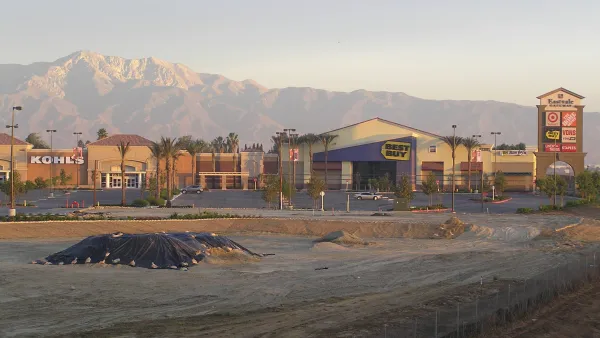A long read by Eric Jaffe serves as a primer on the "Level of Service" (LOS) requirement in the California Environmental Quality Act (CEQA), as well as predicting the large impact of LOS reform on planning in the state and around the country.
Eric Jaffe introduces LOS and its obstructive effect by citing the example of the planning process for the Van Ness BRT project in San Francisco. "The line was a signature project in the half-cent sales tax referendum, Proposition K, that city voters approved in 2003. The original plan called for Van Ness to be up and running by late 2009. The latest timeline has BRT beginning operations in 2018—a full decade and a half after the Prop K vote (which itself came years after the route concept emerged). Big city infrastructure projects get pushed back for countless reasons, but in the case of Van Ness BRT, a major source of the delay was the need to produce this massive report. It didn't receive final approval until late 2013, and was part of a preparatory phase that, all told, took 6 years and cost $7.6 million."
Jaffe explains where LOS goes wrong. "Here's the sad thing about the Van Ness BRT report: The only area where it had an unavoidable negative impact that couldn't be offset under CEQA was traffic...And here's the really sad thing about CEQA traffic impacts: They're determined using a car-friendly metric known as 'level of service' that bases a project's transportation performance on driver delay. In other words, Van Ness BRT required all the trouble of preparing this massive report because, in the twisted eyes of California law, public transit is considered a greater enemy to the environment than car travel."
And to sum up the possibilities for how LOS reform could improve the planning process, a metaphor: "The way it works right now, you might say public projects born into California cities grow up in a broken home. The planning profession, which looks favorably on dense mixed-use environments and multimodal networks, has long since been separated from the environmental law under LOS, which looks favorably on remote development and more road capacity. With VMT as the CEQA traffic metric, the marriage of urban planning and environmental policy should be a more harmonious one."
There are a lot more details in the Jaffe article about how the planning process could improve after LOS review is revised.
FULL STORY: Transit Projects Are About to Get Much, Much Easier in California

National Parks Layoffs Will Cause Communities to Lose Billions
Thousands of essential park workers were laid off this week, just before the busy spring break season.

Retro-silient?: America’s First “Eco-burb,” The Woodlands Turns 50
A master-planned community north of Houston offers lessons on green infrastructure and resilient design, but falls short of its founder’s lofty affordability and walkability goals.

Delivering for America Plan Will Downgrade Mail Service in at Least 49.5 Percent of Zip Codes
Republican and Democrat lawmakers criticize the plan for its disproportionate negative impact on rural communities.

Test News Post 1
This is a summary

Test News Headline 46
Test for the image on the front page.

Balancing Bombs and Butterflies: How the National Guard Protects a Rare Species
The National Guard at Fort Indiantown Gap uses GIS technology and land management strategies to balance military training with conservation efforts, ensuring the survival of the rare eastern regal fritillary butterfly.
Urban Design for Planners 1: Software Tools
This six-course series explores essential urban design concepts using open source software and equips planners with the tools they need to participate fully in the urban design process.
Planning for Universal Design
Learn the tools for implementing Universal Design in planning regulations.
EMC Planning Group, Inc.
Planetizen
Planetizen
Mpact (formerly Rail~Volution)
Great Falls Development Authority, Inc.
HUDs Office of Policy Development and Research
NYU Wagner Graduate School of Public Service




























